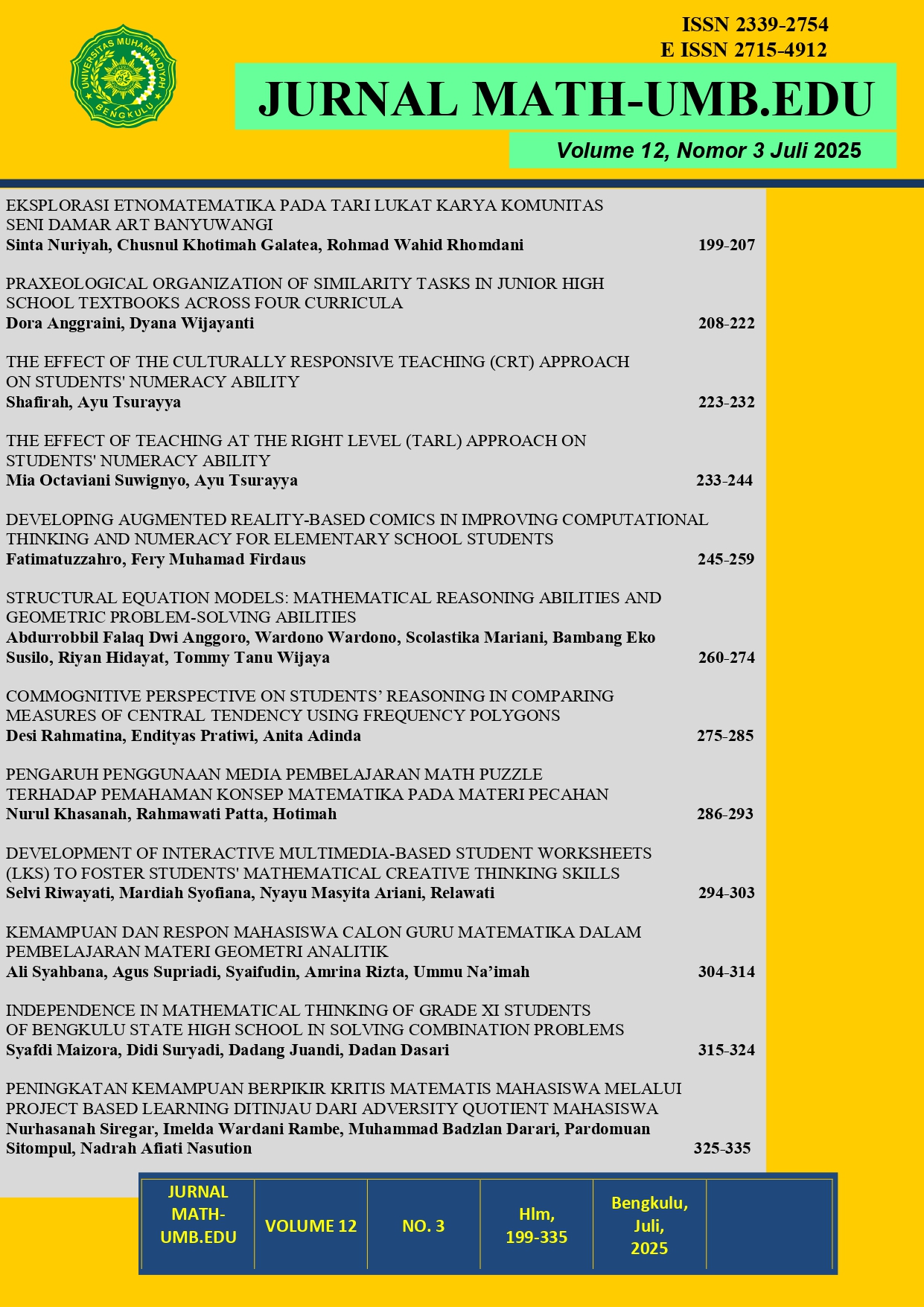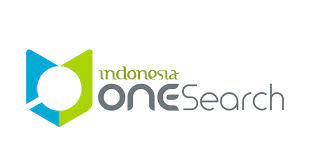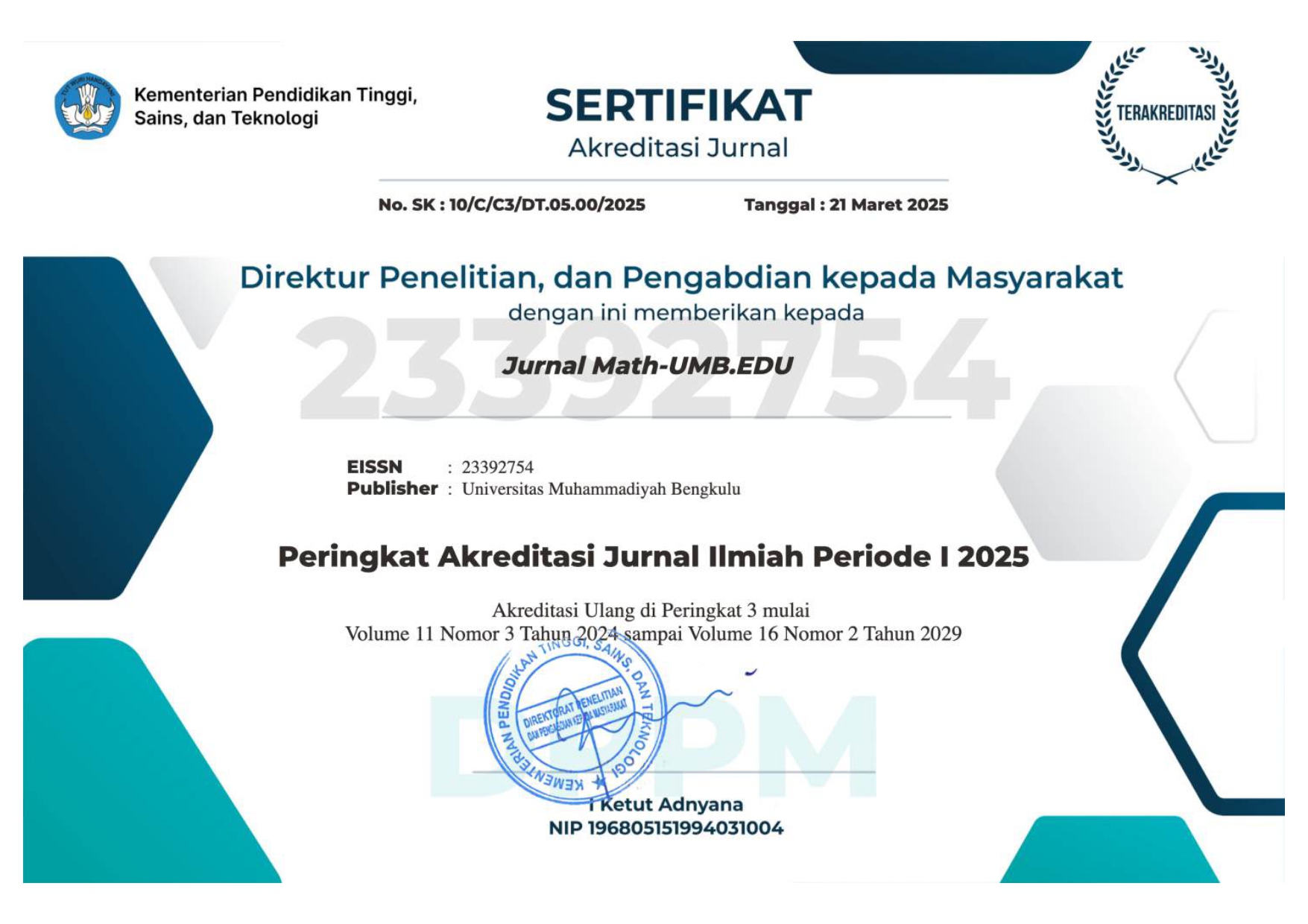INDEPENDENCE IN MATHEMATICAL THINKING OF GRADE XI STUDENTS OF BENGKULU STATE HIGH SCHOOL IN SOLVING COMBINATION PROBLEMS
DOI:
https://doi.org/10.36085/mathumbedu.v12i3.8611Abstract
This study aimed to analyze in depth the students' independent thinking ability in solving combination problems in combinatorics material. The research method used was a qualitative case study, involving 24 high school students in grade XI who were selected purposively based on the criteria of never having studied the concept of combination formally and never having faced similar problems. The research instrument consisted of specially designed combination story problems and semi-structured interview guidelines to explore students' cognitive processes. Analysis was carried out on four aspects of ability, namely: (1) the ability to state problems in other forms, (2) the ability to form a solution strategy, (3) the ability to apply strategies for solving, and (4) the ability to verify the results obtained. The results of the study stated: (1) problems were stated in the form of number symbols and diagrams, using narrative sentences, drawing circles, forming sets, and using symbols B1 to B6; (2) the solution strategies used included: counting with the help of symbols, counting directly without symbols, and counting alternately; (3) solutions were found by using a variable symbol and set approach; (4) no students verified their solution results. These findings confirmed that although the majority of students demonstrated independent thinking in problem-solving and strategy development, only a small proportion consistently implemented the strategy, and none verified the results. The implications of this research could serve as a reference for designing more effective learning strategies to develop students' independent thinking skills in mathematics, particularly in combinatorics.
Keywords: Combination, Independent Thinking, Problem-Solving
References
Creswell, J. W., Hanson, W. E., Clark Plano, V. L., & Morales, A. (2007). Qualitative Research Designs: Selection and Implementation. The Counseling Psychologist, 35(2), 236–264. https://doi.org/10.1177/0011000006287390
Dursun, F., & Aykan, A. (2025). Exploring Teachers’ Narratives: Challenges and Strategies for Enhancing the Teaching Process. SAGE Open, 15(1). https://doi.org/10.1177/21582440251332557
Hadiastuti, D. I., & Soedjoko, E. (2019). Analysis of mathematical representation ability based on students’ thinking style in solving open-ended problems. Unnes Journal of Mathematics Education, 8(3), 195–201. https://doi.org/10.15294/ujme.v8i3.34189
Hayes, J. R. (2013). The Complete Problem Solver. Routledge. https://doi.org/10.4324/9780203062715
Hoffmann, A. (2008). Is it possible to teach our pupils to think independently? Supporting Independent Thinking Through Mathematical Education, 34–37.
Ida, S., Aziz, R., & Irawan, W. H. (2021). Critical and Creative Thinking Skills to Solving Math Story Problems In Elementary School Students. Jurnal Tatsqif, 19(2), 98–113. https://doi.org/10.20414/jtq.v19i2.4069
Israilova, G., & Sheraliyeva, S. (2021). Ways to Teach Students to Independent, Creative Thinking. International Journal of Human Computing Studies, 3(2), 130–135.
Juliarti, I., Susanto, H. A., & Astutiningtyas, E. L. (2024). Pemecahan Masalah Menurut Teori Polya, Dewey, Krulick, Dan Rudnick Berdasarkan Kecerdasan Logis Matematis. Jurnal Pendidikan Matematika, 15(2), 114–130.
Khamidovna, P. O., Saidovna, R. D., & Bakhtiyarovna, Y. B. (2021). The role of comminication and independent thinking in the development of students’ creative ability. Berlin Studies Transnational Journal of Science and Humanities, 1(1.5 Pedagogical sciences), 470–480.
Lehmann, T. H. (2025). Examining the interaction of computational thinking skills and heuristics in mathematical problem solving. Research in Mathematics Education, 1–22. https://doi.org/10.1080/14794802.2025.2460460
Lockwood, E., Wasserman, N. H., & Tillema, E. S. (2020). A case for combinatorics: A research commentary. The Journal of Mathematical Behavior, 59, 100783. https://doi.org/10.1016/j.jmathb.2020.100783
Maizora, S., & Juandi, D. (2022). Third grade elementary school students’ conception of number line. AIP Conference Proceedings, 2468(1), 070065. https://doi.org/10.1063/5.0102551
Maizora, S., & Rosjanuardi, R. (2021). Konsepsi siswa kelas tiga sekolah dasar tentang bilangan bulat. Pythagoras: Jurnal Pendidikan Matematika, 15(2), 201–215. https://doi.org/10.21831/pg.v15i2.37645
Maizora, S., Suryadi, D., Juandi, D., Dasari, D., & Muchlis, E. E. (2025). Integration of GeoGebra and web: An innovative solution for guided discovery learning on triangle congruence material to improve conceptual understanding for prospective mathematics teacher students. Journal of Engineering Science and Technology, 25–32.
Morales, E. P. G., Obregón, J. M. R., Riofrio, M. M. T., Serra, J. E. M., Chávez, A. G., & Pérez, G. M. (2025). Heuristic Processes and the Development of Metacognition in Mathematics Teaching and Learning. Revista de Gestão Social e Ambiental, 19(2), e011135. https://doi.org/10.24857/rgsa.v19n2-003
Nugroho, A., Andriyanti, E., Widodo, P., & Mutiaraningrum, I. (2025). Students’ appraisals post-ChatGPT use: Students’ narrative after using ChatGPT for writing. Innovations in Education and Teaching International, 62(2), 499–511. https://doi.org/10.1080/14703297.2024.2319184
Osaba, E., Villar-Rodriguez, E., Del Ser, J., Nebro, A. J., Molina, D., LaTorre, A., Suganthan, P. N., Coello Coello, C. A., & Herrera, F. (2021). A Tutorial On the design, experimentation and application of metaheuristic algorithms to real-World optimization problems. Swarm and Evolutionary Computation, 64, 100888. https://doi.org/10.1016/j.swevo.2021.100888
Richardo, R., Dwiningrum, S. I. A., Murti, R. C., Wijaya, A., Adawiya, R., Ihwani, I. L., Ardiyaningrum, M., & Aryani, A. E. (2025). Computational thinking skills profile in solving mathematical problems based on computational thinking attitude. Journal of Education and Learning (EduLearn), 19(2), 1157–1166. https://doi.org/10.11591/edulearn.v19i2.21643
Savenkov, A., Romanova, M., & Bold, L. (2021). Development of combinatorial abilities of students in the process of developing compositions of mathematical problems. In S. N. Vachkova, A. Iskakova, & A. Koptelov (Eds.), SHS Web of Conferences (p. 04003). https://doi.org/10.1051/shsconf/20219804003
Sekaryanti, R., Utomo, D. P., & Sutawidjaja, A. (2023). Proses Berpikir Kombinatorik Siswa Dalam Memecahkan Soal Timss Ditinjau Dari Gaya Berpikir. AKSIOMA: Jurnal Program Studi Pendidikan Matematika, 12(1), 1226. https://doi.org/10.24127/ajpm.v12i1.6758
Selter, C. (2009). Creativity, flexibility, adaptivity, and strategy use in mathematics. ZDM, 41(5), 619–625. https://doi.org/10.1007/s11858-009-0203-7
Semadeni, Z. (2008). Factor hampering independent mathematical thinking. Supporting Independent Thinking Through Mathematical Education, 18–25.
Vogel, F., Kollar, I., Fischer, F., Reiss, K., & Ufer, S. (2022). Adaptable scaffolding of mathematical argumentation skills: The role of self-regulation when scaffolded with CSCL scripts and heuristic worked examples. International Journal of Computer-Supported Collaborative Learning, 17(1), 39–64. https://doi.org/10.1007/s11412-022-09363-z
Welsh, M. A., & Dehler, G. E. (2013). Combining Critical Reflection and Design Thinking to Develop Integrative Learners. Journal of Management Education, 37(6), 771–802. https://doi.org/10.1177/1052562912470107
Xamzayeva, G., & Rahimova, M. (2021). Ways to teach students to independent, creative thinking through practical activities. International Journal on Human Computing Studies, 03(2), 125–129.
Xaydarov, O. (2021). How to teach students to independent, creative thinking through practical activities. ACADEMICIA: An International Multidisciplinary Research Journal, 11(6), 43–47. https://doi.org/10.5958/2249-7137.2021.01565.2
Xudaybergenova, E. K. (2021). The Mechanism of Independent Thinking in Students. “ ONLINE-CONFERENCES” PLATFORM, 126–127.



















